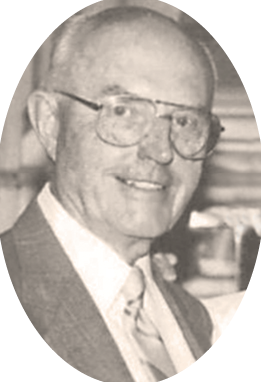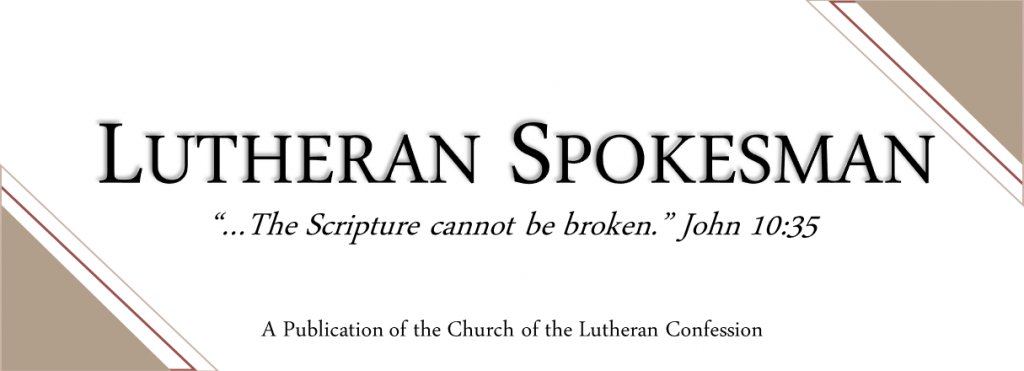In this series we are reprinting Spokesman articles by early leaders in the CLC. Pastor Emeritus James Albrecht is the curator of the series. Rev. George Barthels (1914-1990) was a leader in the formation of the CLC. He served as pastor at various CLC congregations, notably in Red Wing, Sleepy Eye, and Okabena, Minnesota. He was a member of the Board of Doctrine, and was a longtime moderator of the CLC. This article is from the Lutheran Spokesman of February 1960. Scripture quotations are from the King James Version.
There were several things that caused Peter to burst forth with these words. One of them was that Jesus was transfigured before them. “His face did shine as the sun, and His raiment was white as the light.” Although the three disciples could see that it was the same Jesus, whom they knew so well, yet He looked much different. A bright light suddenly beamed forth from Him as though they were trying to look into the brightness of the sun. Not only His face shone with this brightness, but even His clothing appeared as though it had been transfused with a shining light. At the same time they noticed something else very unusual. Two more people were suddenly present in their little group, men whom they had never seen before. Yet they needed no introduction, for they knew immediately who the two were. They were Moses and Elijah, who both appeared here with glorified bodies.
Luke records the subject of their conversation: “They spake of His decease which He should accomplish in Jerusalem.” (Luke 9:31)
All this was in perfect agreement with what Jesus had told His disciples a few days earlier: that He must go up to Jerusalem and be crucified. The disciples could gather that this was a topic of such extreme importance that even Moses and Elijah, who were already in glory, showed high interest in conversing about it with Jesus.
If the disciples were wondering what it all signified, they had not long to wait for an explanation. “While he yet spake, behold, a bright cloud overshadowed them: and behold a voice out of the cloud, which said, This is My beloved Son, in whom I am well pleased; hear ye Him.” (Matthew 17:5) With these words is summarized the significance of this whole incident. This Jesus, whom the disciples knew so well as man, is also true God, who was proclaimed here by the Father as God the Son. The disciples heard the very voice of God the Father say so.
One thing is emphasized by the special announcement from the Father: this glorious Son of God, great and mighty as they here beheld Him, has a message for all poor sinners, who were here represented by Peter, James, and John lying on the ground, dreadfully frightened before the greatness and majesty of Jesus. This message is vital and cannot bear being slighted.
This message is centered in “the decease which He accomplished at Jerusalem” for the atonement of the sins of all the world. This message of the Son is so important that the Father on the Mount of Transfiguration warns, “Hear ye Him!” If the disciples were impressed by the transfiguration of Jesus, they should all the more take the Father’s admonition to heart; Hear ye Him!
This Jesus is your gracious God, who comes to bring to you the comforting message of eternal life. . . . It is in this Gospel where we see Him in close communion with all those who are His own, whether they are still in this life or have already departed into eternal glory, speaking about “His decease which He accomplished at Jerusalem.” It is in this Gospel where the Father also speaks to us from heaven, and says, “This is My beloved Son, in whom I am well pleased: hear ye Him.“

– 1914-1990

